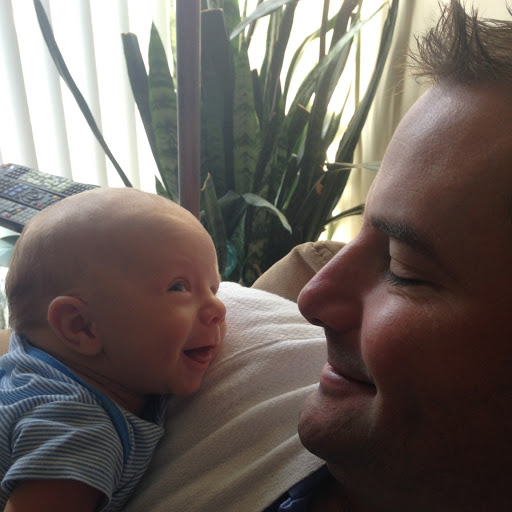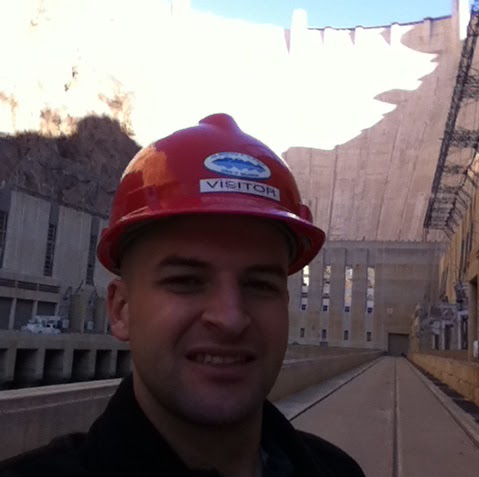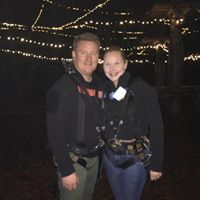Michael James Delp
age ~46
from Huntersville, NC
- Also known as:
-
- Michael J Delp
Michael Delp Phones & Addresses
- Huntersville, NC
- Cornelius, NC
- 5967 Cedar Ridge Dr, Ann Arbor, MI 48103
- 2215 14Th Ave W APT 4, Seattle, WA 98119
- Berkeley, CA
- Mount Horeb, WI
- South Lake Tahoe, CA
- Zephyr Cove, NV
- Woodland, CA
- Sacramento, CA
Specialities
Property Management
Us Patents
-
Systems And Methods For Simulating Sensor Data Using A Generative Model
view source -
US Patent:20210073584, Mar 11, 2021
-
Filed:Sep 11, 2019
-
Appl. No.:16/567328
-
Inventors:- Los Altos CA, US
Hiroyuki Funaya - Ann Arbor MI, US
Michael James Delp - Ann Arbor MI, US -
International Classification:G06K 9/62
G06F 17/50
G06N 3/04
G06T 19/00
G06N 5/04 -
Abstract:System, methods, and other embodiments described herein relate to simulating sensor data for a scene. In one embodiment, a method includes, in response to receiving a request to generate simulated sensor data for the scene, acquiring simulation data about the scene. The simulation data includes at least simulated information about the scene that is computer-generated. The method includes computing the simulated sensor data using a generative neural network that accepts the simulation data as an input and produces the simulated sensor data as an output. The simulated sensor data is a simulated perception of the scene by a sensor. The method includes providing the simulated sensor data as part of the scene.
-
Systems And Methods For Registering 3D Data With 2D Image Data
view source -
US Patent:20200160487, May 21, 2020
-
Filed:Nov 15, 2018
-
Appl. No.:16/192225
-
Inventors:- Los Altos CA, US
Michael James Delp - Ann Arbor MI, US -
International Classification:G06T 3/00
G06T 7/11
G06K 9/62
G06K 9/34
G06T 7/20 -
Abstract:Systems and methods described herein relate to registering three-dimensional (3D) data with two-dimensional (2D) image data. One embodiment receives 3D data from one or more sensors and 2D image data from one or more cameras; identifies a 3D segment in the 3D data and associates it with an object; classifies pixels in the 2D image data; determines a speed and a heading for the object; and registers the 3D segment with a portion of the classified pixels by either (1) shifting the 3D segment to a position that, based on the associated object's speed and heading, corresponds to a 2D image data capture time and projecting the time-shifted 3D segment onto 2D image space; or (2) projecting the 3D segment onto 2D image space and shifting the projected 3D segment to a position that, based on the associated object's speed and heading, corresponds to a 2D image data capture time.
-
Systems And Methods For Registering 3D Data With 2D Image Data
view source -
US Patent:20200160542, May 21, 2020
-
Filed:Nov 15, 2018
-
Appl. No.:16/192267
-
Inventors:- Los Altos CA, US
Michael James Delp - Ann Arbor MI, US -
International Classification:G06T 7/33
G06T 7/11
G06T 7/20
G06T 3/00 -
Abstract:Systems and methods described herein relate to registering three-dimensional (3D) data with two-dimensional (2D) image data. One embodiment receives 3D data from one or more sensors and 2D image data from one or more cameras; identifies a 3D segment in the 3D data and associates it with an object; identifies 2D boundary information for the object; determines a speed and a heading for the object; and registers the 3D segment with the 2D boundary information by adjusting the relative positions of the 3D segment and the 2D boundary information based on the speed and heading of the object and matching, in 3D space, the 3D segment with projected 2D boundary information.
-
Publishing Lidar Cluster Data
view source -
US Patent:20180341019, Nov 29, 2018
-
Filed:May 26, 2017
-
Appl. No.:15/606573
-
Inventors:- Erlanger KY, US
Nobuhide Kamata - Ann Arbor MI, US
Michael J. Delp - Ann Arbor MI, US
Michael R. James - Northville MI, US -
International Classification:G01S 17/08
G01S 17/93
G01S 17/89 -
Abstract:Systems and methods for publishing LIDAR cluster data are described. The vehicle can identify one or more clusters based on data from the LIDAR sensor. The identified one or more clusters can be representative of at least one object in an external environment of the vehicle. Additionally, the vehicle can publish the identified one or more clusters before the LIDAR sensor completes a full 360 degree rotation about the axis of rotation.
-
Vehicle-To-Human Communication In An Autonomous Vehicle Operation
view source -
US Patent:20180276986, Sep 27, 2018
-
Filed:Mar 22, 2017
-
Appl. No.:15/465847
-
Inventors:- Los Altos CA, US
Michael J. Delp - Ann Arbor MI, US -
International Classification:G08G 1/005
G05D 1/00
G08G 1/09 -
Abstract:A device and method for autonomous vehicle-to-human communications are disclosed. Upon detecting a human traffic participant being proximal to a traffic yield condition of a vehicle planned route, generating a message for broadcast to the human traffic participant and sensing whether the human traffic participant acknowledges a receipt of the message. When sensing that the human traffic participant acknowledges receipt of the message, generating a vehicle acknowledgment message for broadcast to the pedestrian.
-
Systems And Methods For Rendezvousing With An Autonomous Modular Vehicle To Provide Energy
view source -
US Patent:20180257498, Sep 13, 2018
-
Filed:Mar 8, 2017
-
Appl. No.:15/453608
-
Inventors:- Los Altos CA, US
Michael J. Delp - Ann Arbor MI, US -
International Classification:B60L 11/18
G05D 1/02
G01C 21/34 -
Abstract:System, methods, and other embodiments described herein relate to determining rendezvous locations and autonomously swapping a resupply carriage with a vehicle along a route. In one embodiment, a method includes in response to a request for resupplying the vehicle with energy, determine a rendezvous point for meeting the vehicle with a resupply carriage. The method includes dispatching the resupply carriage to meet the vehicle at the rendezvous point by providing an electronic signal to the resupply carriage to cause the resupply carriage to autonomously travel to the rendezvous point. The method includes controlling the vehicle to swap a current carriage for the resupply carriage to supply energy to the vehicle. The vehicle is comprised of a passenger compartment that is removably attached to the current carriage. The current carriage and the resupply carriage are interchangeable propulsion sources for the vehicle.
-
Service Drone Configuration Based On A Serviceable Vehicle-Component Fault Condition
view source -
US Patent:20180259952, Sep 13, 2018
-
Filed:Mar 7, 2017
-
Appl. No.:15/452272
-
Inventors:- Los Altos CA, US
Michael J. Delp - Ann Arbor MI, US -
International Classification:G05D 1/00
G07C 5/08
G07C 5/00
B64C 39/02
H04W 4/00 -
Abstract:A device and method for service drone configuration are disclosed. Vehicle diagnostic data is retrieved and monitored for error data that indicates a serviceable vehicle-component fault condition. When the error data indicates the serviceable vehicle-component fault condition, a drone service protocol is generated based on the error data, where the drone service protocol being operable to instruct a service drone to attend to a source of the serviceable vehicle-component fault condition. The drone service protocol can be transmitted for deploying the service drone.
-
Traffic Light Detection Using Multiple Regions Of Interest And Confidence Scores
view source -
US Patent:20180053059, Feb 22, 2018
-
Filed:Aug 18, 2016
-
Appl. No.:15/240112
-
Inventors:- Erlanger KY, US
Katsuhiro Sakai - Ann Arbor MI, US
Danil V. Prokhorov - Canton MI, US
Michael J. Delp - Ann Arbor MI, US -
International Classification:G06K 9/00
G06K 9/20
G06T 7/40
G06K 9/62 -
Abstract:Described herein is a device for traffic light detection. The device comprises a memory and a traffic light detection module. The memory may store information, the information comprising first traffic light data of a first traffic light and second traffic light data of a second traffic light. The traffic light detection module may receive an image comprising a first candidate and a second candidate; determine a first region of interest based, at least in part, on the first traffic light data, the first region of interest comprising the first candidate; determine a second region of interest based, at least in part, on the second traffic light data, the second region of interest comprising the second candidate; and determine a confidence score for a first state of the first candidate, the confidence score based, at least in part, on a spatial relationship factor between the first candidate and the second candidate.
Isbn (Books And Publications)





The Coast of Nowhere: Meditations on Rivers, Lakes, and Streams
view sourceAuthor
Michael Delp
ISBN #
0814327117


New Poems from the 3rd Coast: Contemporary Michigan Poetry
view sourceAuthor
Michael Delp
ISBN #
0814327974

Wikipedia References

Michael Delp
Resumes

Co Owner
view sourceWork:
Home Service Center
Co Owner
Co Owner

Michael Delp
view source
Michael Delp
view source
Michael Delp
view sourceLocation:
United States
Googleplus

Michael Delp

Michael Delp

Michael Delp

Michael Delp

Michael Delp
Myspace
Classmates

Michael Delp
view sourceSchools:
Beverly High School Beverly MA 1974-1978
Community:
Shirley Bartol

Michael Delp
view sourceSchools:
Antietam Middle/High School Reading PA 1982-1986
Community:
Paul Bakanowski

Michael Delp
view sourceSchools:
Connell Elementary School Connell WA 1971-1975
Community:
Judy Dehle, David Mcmullin, Melissa Davis

Michael Delp
view sourceSchools:
American Community School Amman Jordan 1991-1996
Community:
Hanneke Huijssoon, Charles Winter, Chris Shenar, Arun Kumar

Madison Heights High Scho...
view sourceGraduates:
harold counceller (1979-1983),
Pennie Jones (1973-1977),
Laura Klaus (1972-1976),
michael delp (1970-1974),
charley rhoads (1965-1969)
Pennie Jones (1973-1977),
Laura Klaus (1972-1976),
michael delp (1970-1974),
charley rhoads (1965-1969)

Grayling High School, Gra...
view sourceGraduates:
Michael Delp (1980-1984)

Antietam Middle/High Scho...
view sourceGraduates:
Michael Shaffer (1994-1998),
David Hagaman (2002-2006),
Chad Deisher (2000-2004),
Marge Litka (1974-1975),
Brett Bonda (1977-1981),
Michael Delp (1982-1986)
David Hagaman (2002-2006),
Chad Deisher (2000-2004),
Marge Litka (1974-1975),
Brett Bonda (1977-1981),
Michael Delp (1982-1986)

Clay City High School, Cl...
view sourceGraduates:
Lisa Griffith (1966-1970),
michael delp (1996-2000),
Brian Michael (1987-1991),
Michael Vanarsdale (1981-1985)
michael delp (1996-2000),
Brian Michael (1987-1991),
Michael Vanarsdale (1981-1985)
Youtube
Flickr
News

SpaceX rocket readied for space station resupply run
view source- Were looking at two different biomedical issues, said Michael Delp, principal investigator for the rodent research experiment from Florida State University. The first is visual impairment that occurs in some of the astronauts. To date, it only occurs in male astronauts, so were looking at a cou
- Date: Aug 13, 2017
- Category: Science
- Source: Google

Science and technology to get boost from CRS-12 mission
view source- the only live cargo aboard CRS-12. As was explained by Michael Delp, principal investigator for Rodent Research-9 from the Florida State University, 20 mice will be the focus of an investigation related to musculoskeletal and neurovascular systems of astronauts in long-term interplanetary travel. D
- Date: Aug 12, 2017
- Category: Science
- Source: Google

Deep Space Radiation Caused Heart Problems For Apollo Astronauts
view source- "We've probably underestimated the impact of deep-space radiation on not just cardiovascular disease but health in general", said lead author of the study, exercise physiologist Dr. Michael Delp of Florida State University.
- Date: Jul 28, 2016
- Category: Sci/Tech
- Source: Google

Apollo Astronaut Study Reveals Greater Heart Risk for Deep-Space Travelers
view source- The International Space Station is scheduled to be decommissioned in 2024, and nations (and private companies like SpaceX) are turning their sights to the moon and Mars, said Michael Delp, a researcher at Florida State University and lead author of the new study. And with that comes exposure
- Date: Jul 28, 2016
- Category: Sci/Tech
- Source: Google

Studying heart disease in astronauts yields clues but not conclusive evidence
view source- The deaths of Irwin, Evans and Armstrong stick out to Michael Delp, a cardiovascular physiology expert at Florida State University, because the men have at least one thing in common: all three flew to the moon.
- Date: Jul 28, 2016
- Category: Sci/Tech
- Source: Google

"Space-Age" Research Looks to Provide New Human Health Insights
view source- , Ph.D., of Loma Linda University is the principal investigator for a study of the effects of spaceflight on immune system function. Michael Delp, Ph.D., of Florida State University, is the principal investigator for a study of spaceflight-induced changes in the structure of the blood-brain barrier.
- Date: Apr 13, 2015
- Category: Sci/Tech
- Source: Google

Police: Man shot ex as she played organ at church
view source- Trooper Michael Delp arrived from a barracks outside town eight minutes after the 911 call. Delp told The Associated Press that state police cover for Coudersport police, who don't work 24/7 and weren't scheduled to patrol until 4 p.m. that day.
- Date: Dec 03, 2012
- Category: U.S.
- Source: Google

Michael Delp
view source
Michael Delp
view source
Michael Delp
view source
Michael Delp
view source
Michael Delp
view source
Michael Delp
view source
Michael R Delp
view source
Michael Delp
view sourceGet Report for Michael James Delp from Huntersville, NC, age ~46
















